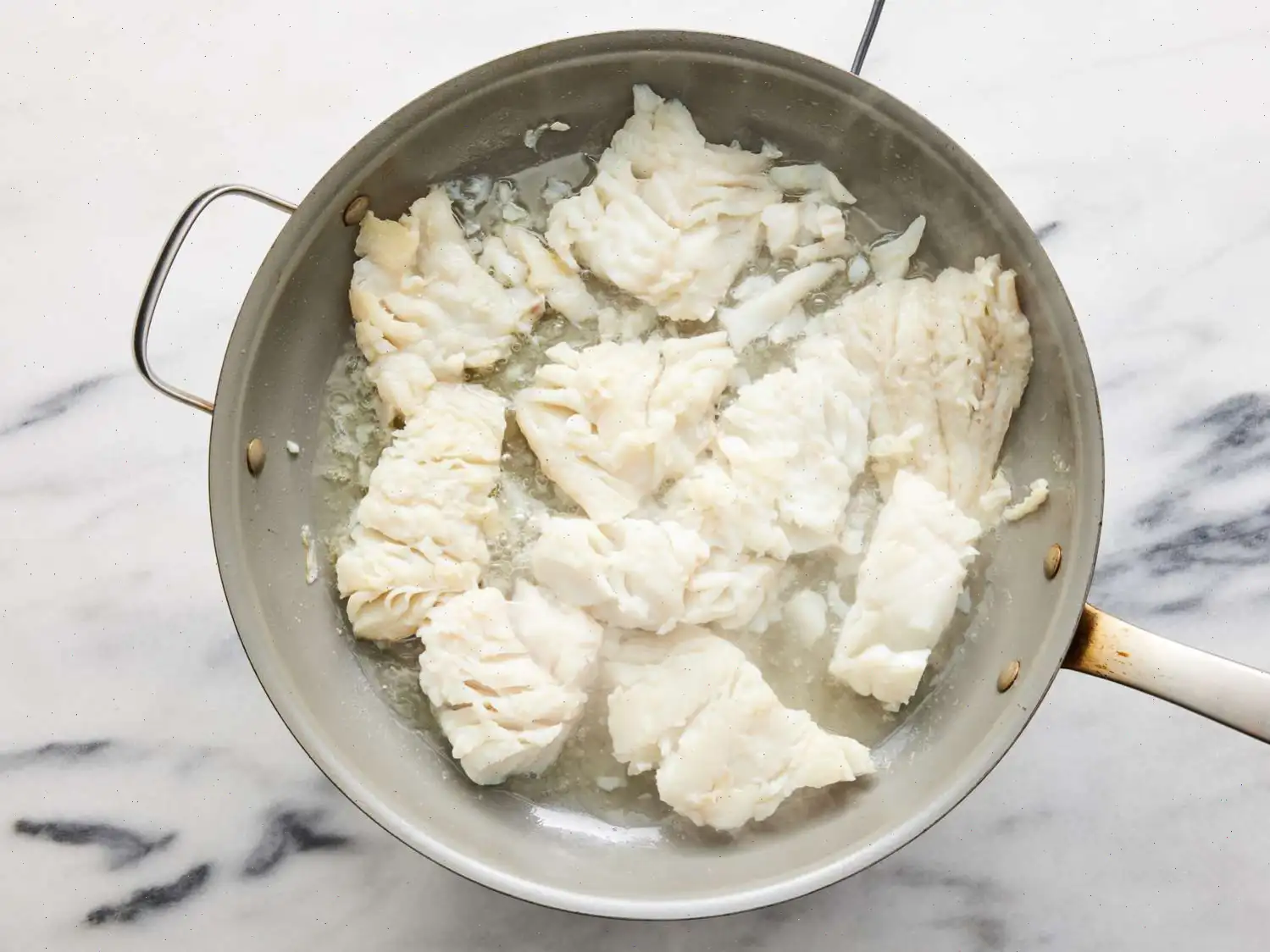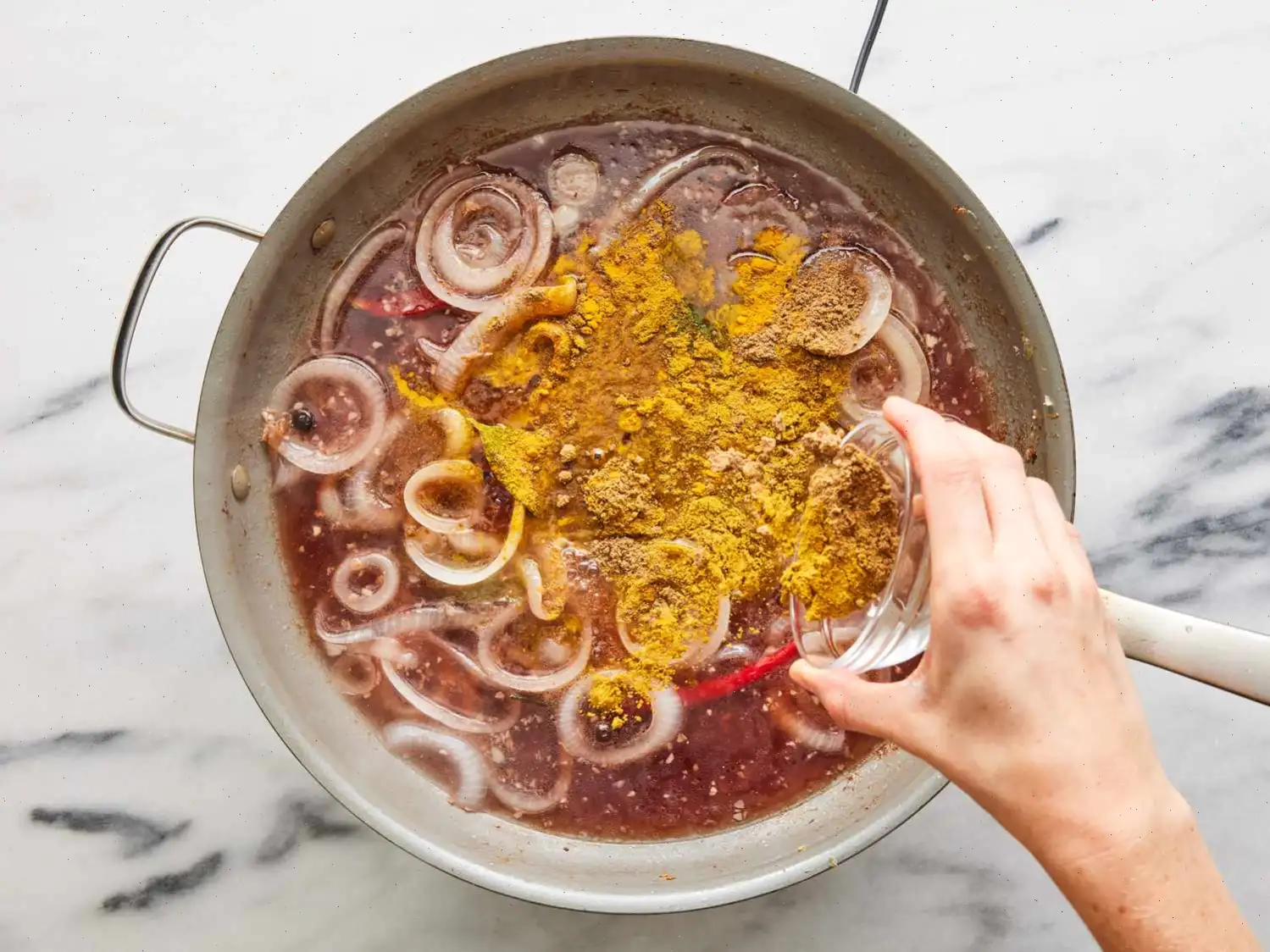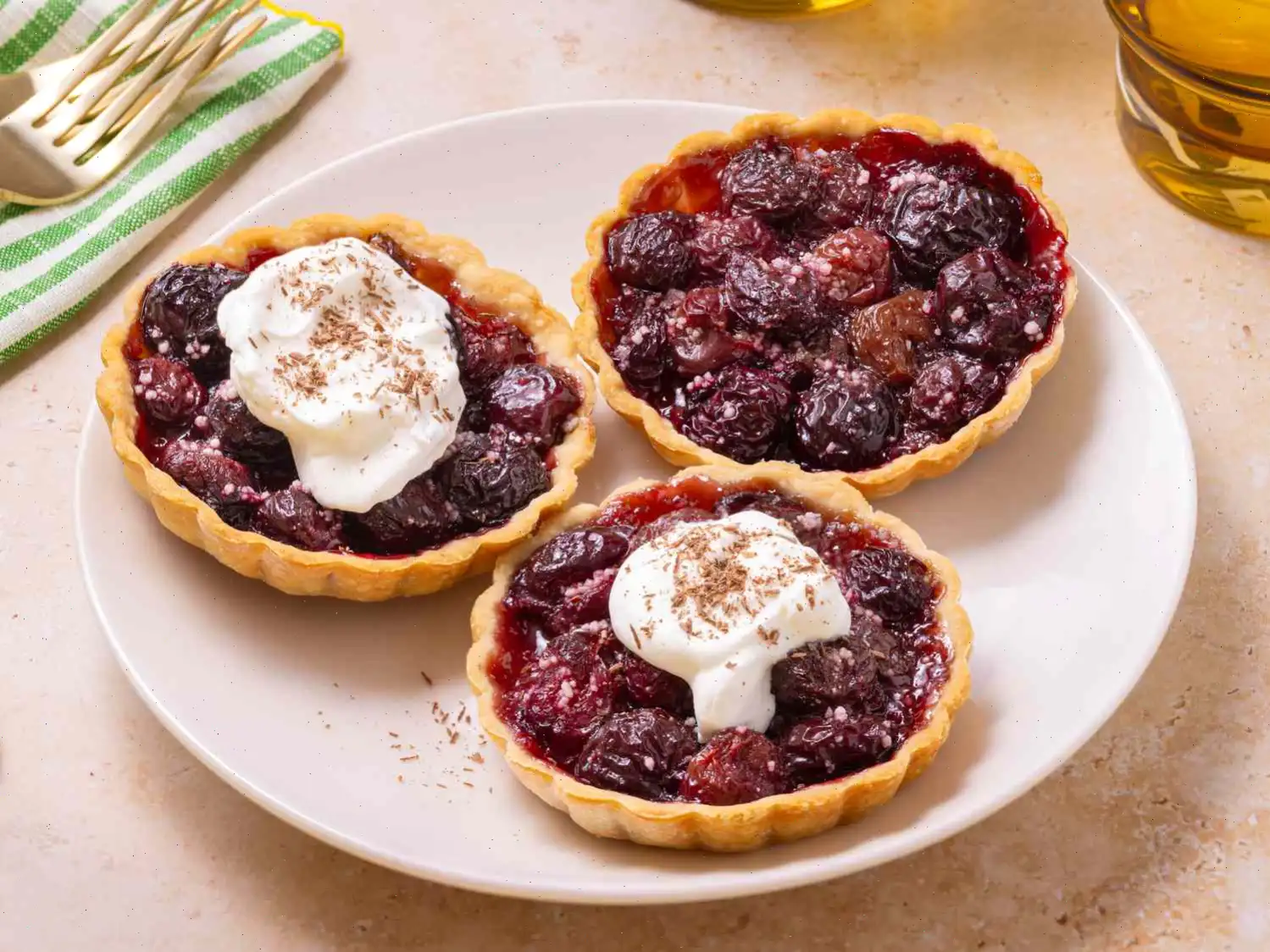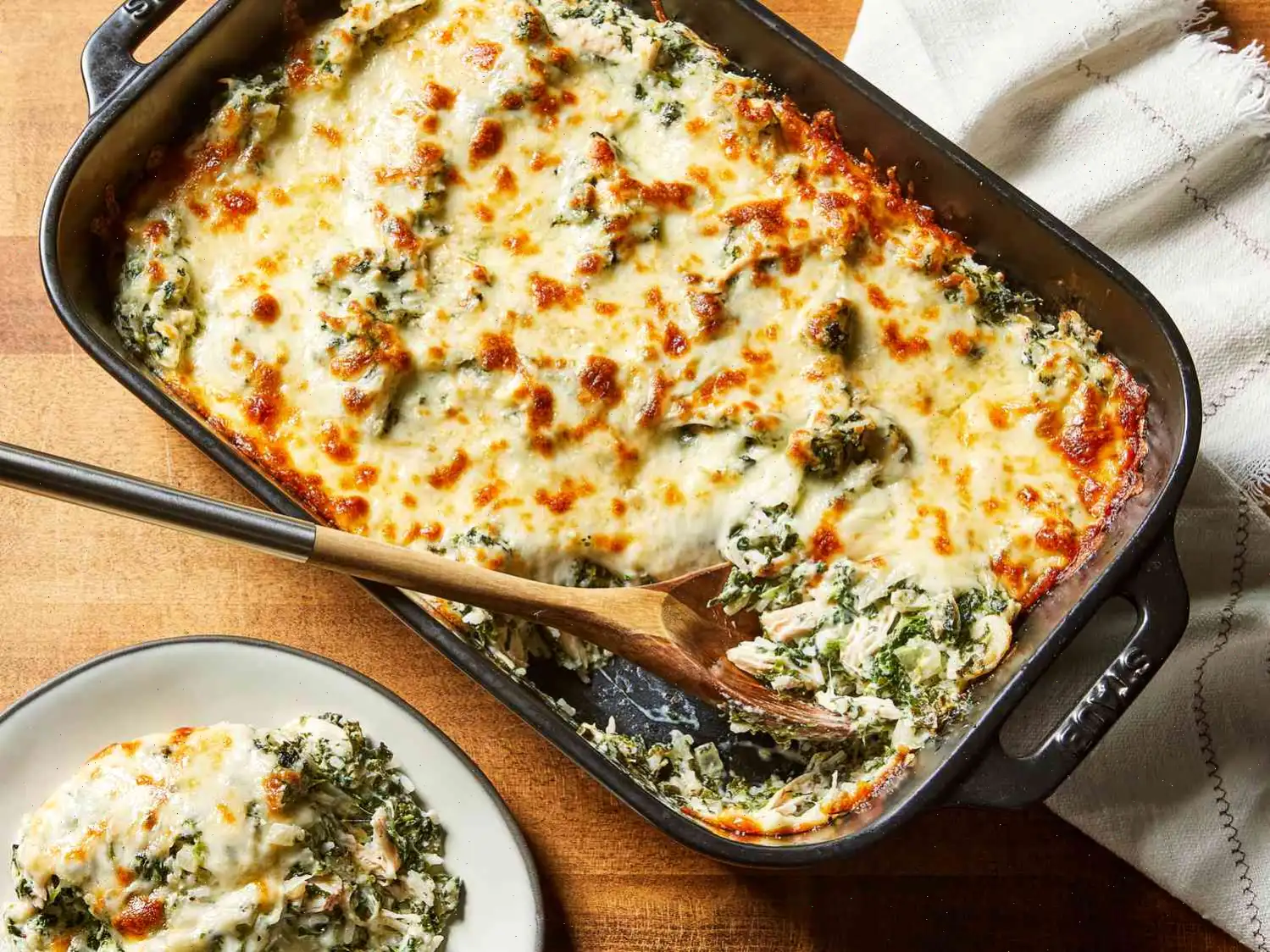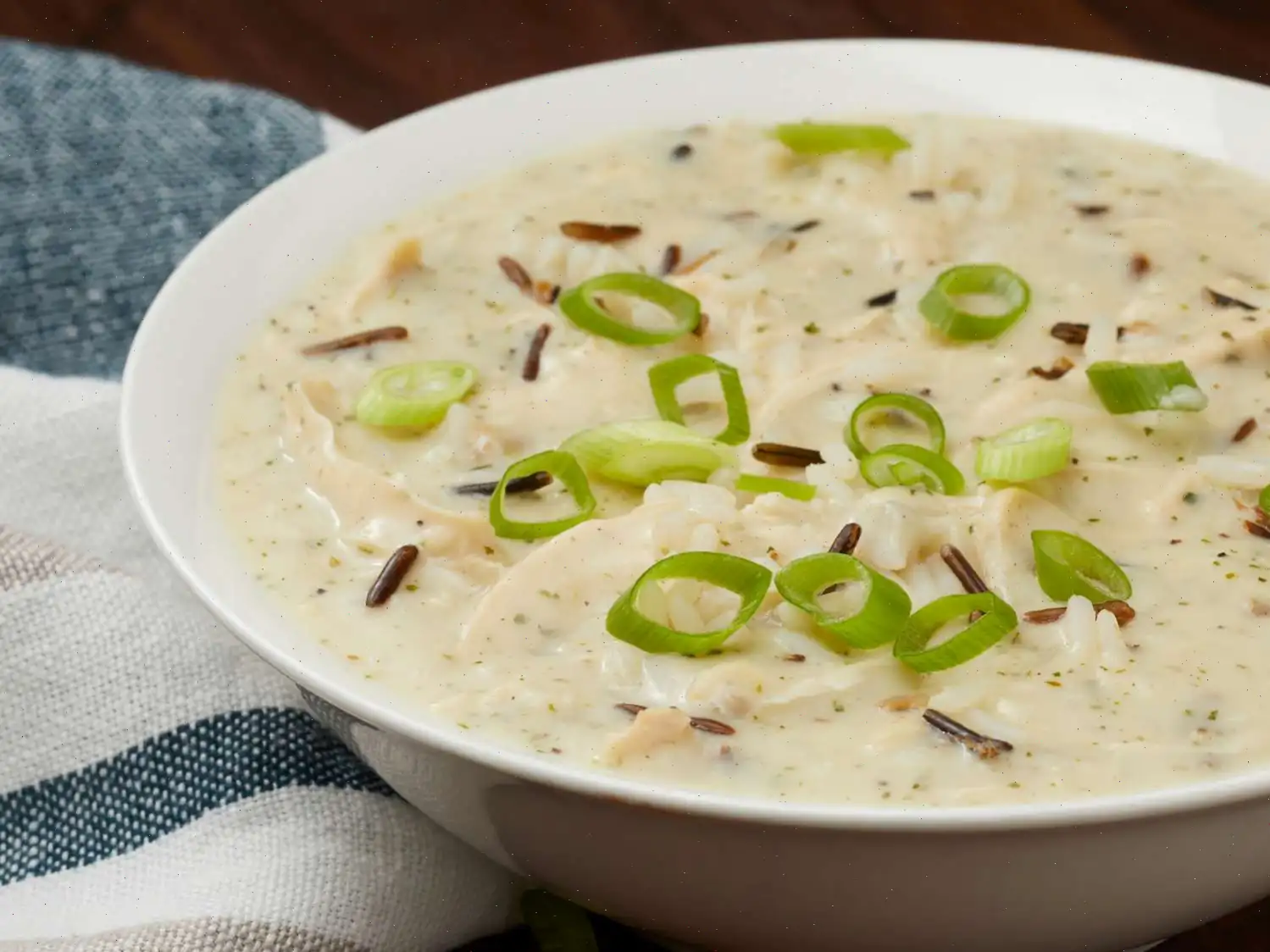
Cape Malay Pickled Fish Recipe
Ingredients
- cup vegetable oil for frying
- 3 pounds cod fillets, cut into 2 to 3 ounce portions
- Salt to taste
- 2 large onions, peeled and sliced into rings
- 2 cloves garlic, chopped
- 1 red chile pepper, seeded and sliced lengthwise
- 3 large bay leaves
- 8 whole black peppercorns
- 4 whole allspice berries
- 2 cups red wine vinegar
- cup water
- cup packed brown sugar, or to taste
- 2 tablespoons curry powder
- 2 teaspoons ground cumin
- 2 teaspoons ground coriander
- 1 teaspoon ground turmeric
Directions
- Gather all ingredients and set them aside for easy access.
- Heat the vegetable oil in a large skillet over medium-high heat.
- Season the cod fillets with salt and carefully fry them in the hot skillet until browned on both sides and the fish flakes easily with a fork, about 5 minutes per side. Once done, transfer the fish to a plate and set aside.
- In the same skillet, add the sliced onions and chopped garlic. Cook them over medium heat for about 5 minutes until the onions become translucent.
- Add the red chile pepper, bay leaves, peppercorns, and allspice berries to the skillet, stirring to combine with the onions and garlic.
- Pour in the red wine vinegar and water, bringing the mixture to a boil.
- Once boiling, stir in the brown sugar, ensuring it dissolves completely. Season the mixture with curry powder, cumin, coriander, and turmeric. Taste the liquid and adjust the sugar to your liking if needed.
- Carefully arrange the layers of fried fish and pickling mixture in a serving dish. Pour the pickling liquid over the fish, ensuring the top layer is well covered.
- Allow the dish to cool to room temperature for about 30 minutes.
- Cover the dish and refrigerate for at least 24 hours to allow the flavors to develop before serving.
Nutrition Facts (per serving)
- Calories: 238
- Total Fat: 10g (13% Daily Value)
- Saturated Fat: 1g (7% Daily Value)
- Cholesterol: 49mg (16% Daily Value)
- Sodium: 67mg (3% Daily Value)
- Total Carbohydrate: 16g (6% Daily Value)
- Dietary Fiber: 1g (4% Daily Value)
- Protein: 21g (42% Daily Value)
- Vitamin C: 3mg (4% Daily Value)
- Calcium: 44mg (3% Daily Value)
- Iron: 1mg (7% Daily Value)
- Potassium: 590mg (13% Daily Value)
* Percent Daily Values are based on a 2,000 calorie diet. Your daily values may vary depending on your calorie needs.
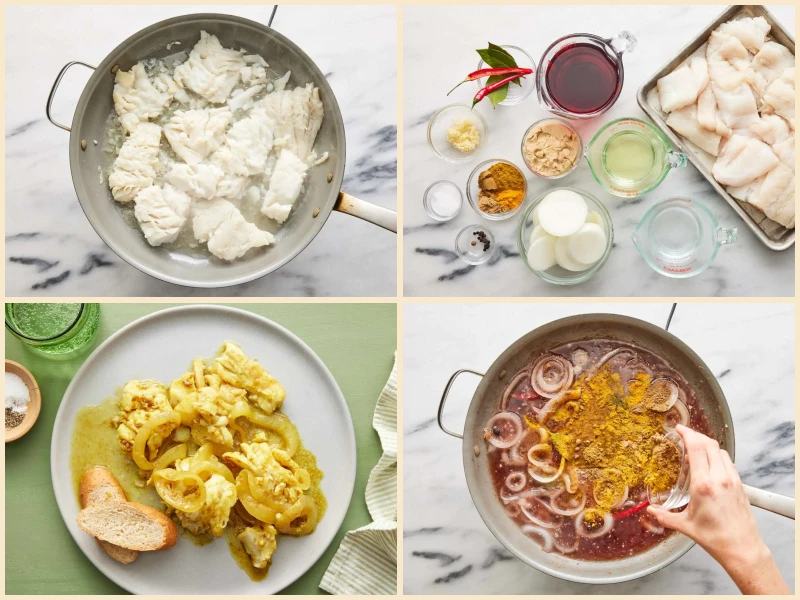
Cape Malay Pickled Fish is a traditional South African dish that has become a staple, particularly during the Easter holidays in Cape Town. This dish combines the savory taste of fried cod fillets with a spicy, tangy pickling liquid that incorporates a variety of aromatic spices, such as curry powder, cumin, coriander, and turmeric. It is a perfect example of Cape Malay cuisine, which is renowned for its fusion of local African, Indonesian, and European flavors.
History and Origins
The origin of Cape Malay Pickled Fish is deeply tied to the history of the Cape Malay community. This community, which was formed in the 17th and 18th centuries when slaves from Southeast Asia, particularly Indonesia, were brought to the Cape by the Dutch colonialists, created a unique cultural blend. The Cape Malay people introduced various culinary influences, including spices, which became integral to South African cuisine. Pickled fish, often served as a dish during Easter, is one of the most cherished recipes in the Cape Malay culinary tradition. It was a way of preserving fish, especially before the advent of refrigeration, and has since become a beloved dish that evokes nostalgia for many South Africans.
Regional Characteristics
Cape Malay Pickled Fish is a characteristic dish of the Western Cape, particularly Cape Town. This region, influenced by its rich history of trade and diverse cultures, is home to many dishes that incorporate an abundance of spices. What sets this dish apart is its combination of sweet and tangy flavors, thanks to the balance of vinegar and brown sugar in the pickling liquid. The dish is typically made with cod, although variations may include other fish like snoek or yellowtail, depending on availability. The use of spices such as curry powder, cumin, and turmeric reflects the influence of Indian and Indonesian cuisine, adding depth and complexity to the dish.
Differences from Similar Dishes
While pickled fish is a popular dish in many cultures, Cape Malay Pickled Fish is distinct due to its specific blend of spices and its sweetness. For example, in many Western cuisines, pickled fish might be prepared with a simple vinegar-based brine or be more acidic in taste. In contrast, Cape Malay Pickled Fish features a marinade that balances sourness from the vinegar with sweetness from the sugar, creating a more complex flavor profile. Additionally, the use of curry and other spices sets it apart from other types of pickled fish, making it richer in flavor. The dishs preparation also includes frying the fish before pickling, which gives it a unique texture and depth of flavor.
Where It's Typically Served
Pickled fish is traditionally served as a cold appetizer or side dish, often with crusty bread or a simple green salad. In Cape Town, it is an essential part of the Easter celebrations, alongside other iconic dishes like hot cross buns. While its popularity is most pronounced in the Western Cape, this dish has spread throughout South Africa, and can occasionally be found in other regions, particularly in restaurants that specialize in traditional South African cuisine. It is commonly enjoyed as part of a communal meal, reflecting the sharing culture that is central to South African food traditions.
Interesting Facts
- Cape Malay Pickled Fish is often made in large batches and stored in the refrigerator for a few days before serving, as the flavors develop and intensify over time. It is said that it tastes even better on the second day!
- The dishs popularity during Easter stems from its role as a fish-based meal that could be prepared in advance and enjoyed during the festive season when many South Africans would abstain from eating meat.
- The "pickling" process used in Cape Malay Pickled Fish was historically a method of preserving fish, especially in coastal areas where fresh fish was abundant and could spoil quickly.
- While cod is the most common fish used for Cape Malay Pickled Fish, some people use other local fish varieties, such as snoek, a fatty fish popular in South African cooking.
- The Cape Malay community has a long tradition of using aromatic spices, which were introduced to the region by Southeast Asian slaves brought by the Dutch. These spices are a hallmark of Cape Malay cooking.
FAQ about Cape Malay Pickled Fish Recipe
Comments
David Rodriguez
02/03/2024 10:15:27 AM
My family adores this recipe! I personally made a few tweaks - I reduced the amount of white wine vinegar and increased the water slightly. This time, I divided the vinegar between red and white wine vinegar, and also added a touch of plain white vinegar and water. In terms of fish, I switched it up by using cod or canned tuna (my go-to), and recently tried yellowfish that we caught ourselves. Highly recommend experimenting with different types of fish, it really adds an interesting twist to the dish!
Kenneth Cruz
11/22/2024 07:52:54 AM
My cod fillets seemed to be thinner than expected, as they started to break apart while cooking, making it challenging to layer them as per the recipe instructions. This led to some confusion during execution. Nonetheless, the dish turned out well. While I enjoyed it, my husband was not as enthusiastic, indicating it could be a divisive dish. If you enjoy tangy, vinegary flavors, this dish may be perfect for you.
David Thomas
08/19/2024 07:34:27 AM
The recipe was a breeze to follow, and I successfully made my own pickled fish this year instead of relying on my parents' help. This accomplishment makes me feel like a grown woman now.


